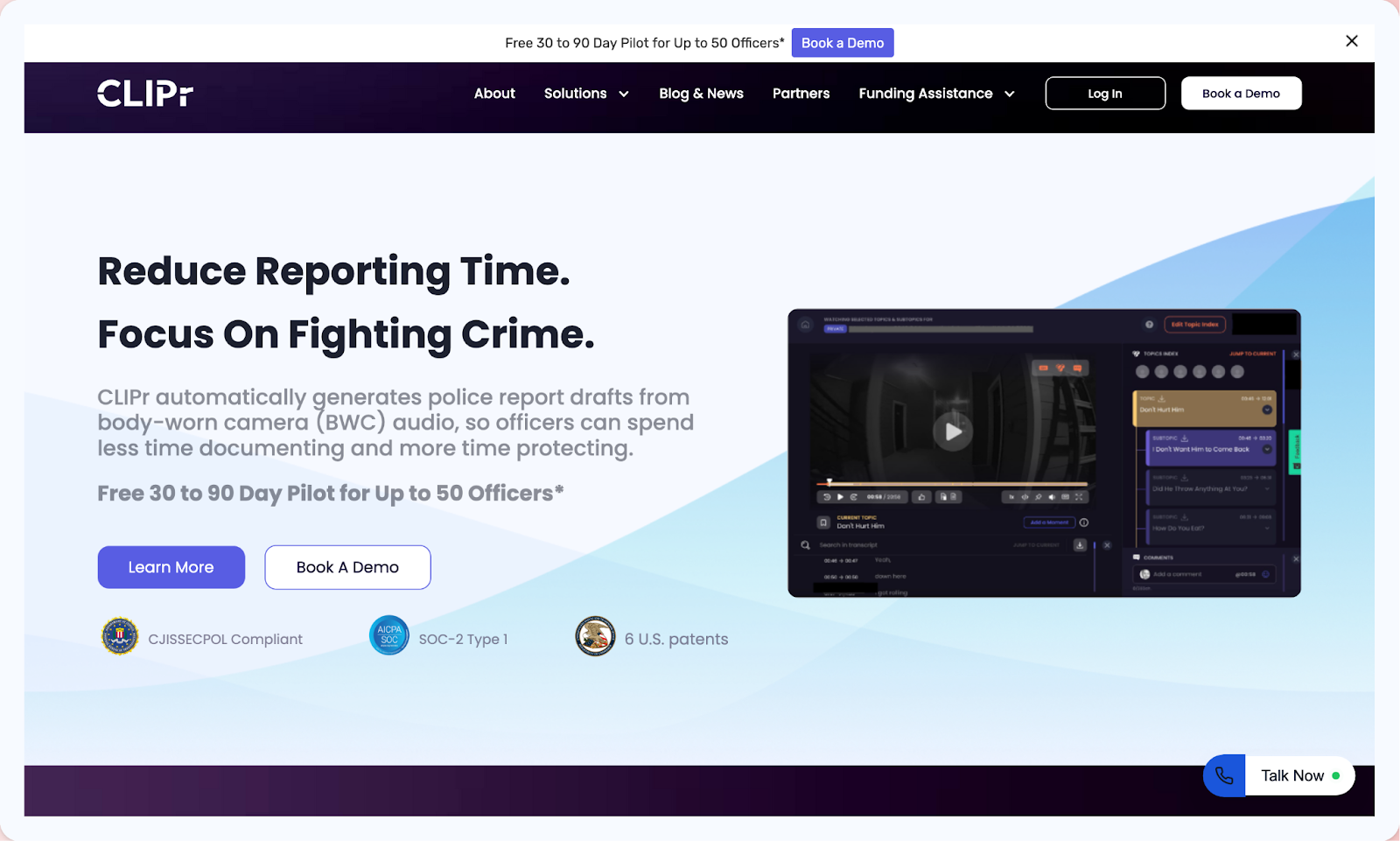FOIA Redaction Software: Must-Have Features for Law Enforcement IT Teams
FOIA redaction software must-have features for law enforcement teams: AI automation, compliance tools, and seamless integration to process video.
The rise of AI in policing—from facial recognition to automated body camera transcription—is transforming law enforcement workflows at what feels like a breakneck speed.
However, with great efficiency comes great responsibility, including legal, ethical, and procedural risks that must be addressed directly.
Smart AI adoption helps departments stay ahead of the curve, reducing liability rather than increasing it.
The question isn't whether to adopt AI, but how to do it right.
AI tools are reshaping daily operations across departments nationwide.
Today's officers use artificial intelligence to analyze body camera and surveillance footage, support investigations with facial and license plate recognition, flag patterns in community policing data, and assist with drafting incident notes from audio recordings.
These technologies act as force multipliers for short-staffed agencies—80% of large police departments now use body-worn cameras, generating massive data volumes that would be near impossible to process manually.
But they're also under growing legal scrutiny, and for good reason.

Incomplete or inaccessible footage and documentation increases legal vulnerability. When FOIA requests arrive—and they will—departments need searchable, properly maintained records.
Manual redaction of body camera footage can take 5-10 hours per hour of video, creating backlogs that make meeting legal deadlines practically impossible.
AI Misfires
When facial recognition suggestions or inaccurate transcription errors are accepted without human oversight, the risk of false accusations or reputational damage increases.
The numbers are sobering: at least seven documented wrongful arrests due to facial recognition errors have already occurred, with settlements like the $200,000 payout in Louisiana highlighting real financial consequences.
Privacy Breaches
Leaked or improperly redacted data can expose agencies to lawsuits. With more than 80% of criminal offenses now involving video or audio evidence, the risk surface has expanded dramatically.
For example, the Illinois's Biometric Information Privacy Act allows private lawsuits with penalties of $1,000-$5,000 per violation.
Compliance Failure
Failure to meet FOIA or CJIS standards puts departments at odds with the law. The FBI's updated CJIS Security Policy v6.0, released in December 2024, introduced stringent new requirements for AI systems accessing criminal justice information, with full compliance required.

CLIPr's AI-generated draft notes ensure fast, consistent documentation while minimizing human error. The system preserves event accuracy and supports FOIA requests with searchable records that help departments meet tight deadlines—as short as 5 days in some states.
CLIPr provides timestamped logs and searchable records for every incident, supporting transparency and court admissibility with a clear chain of custody. This addresses the Electronic Frontier Foundation's concern about AI systems that don't maintain audit trails.
The system helps detect and flag personally identifiable information, sensitive data, and confidential details.
This assists departments in preparing footage for FOIA requests without risking data exposure—a critical capability when manual redaction simply isn't scalable.
Agencies retain full control and ownership of their data. Unlike some solutions that create vendor dependencies, CLIPr ensures departments maintain sovereignty over their information while meeting CJIS compliance requirements.
Prioritize vendors who understand law enforcement risk profiles and build compliance into their systems from the ground up. Look for CJIS compliance and transparent audit capabilities.
Create internal policies to guide usage and oversight of AI tools before deployment. The International Association of Chiefs of Police recommends conducting rigorous AI risk evaluations and establishing governance structures for transparency and accountability.
AI assists with drafting notes and ensuring complete records—but officers remain responsible for final reports based on their experience, training, and professional judgment. This distinction is crucial for legal defensibility.
Keep AI models current and train staff on both capabilities and limitations. Some departments have successfully implemented AI tools by pairing them with extensive training, resulting in time savings while maintaining accuracy through proper human oversight.
Work with companies that understand the unique challenges of law enforcement data management, including chain of custody requirements, evidence integrity, and the complex regulatory landscape.
The promise of AI in law enforcement is enormous—faster documentation, better outcomes, and smarter resource allocation. But compliance must be prioritized from day one, not retrofitted after problems emerge.
CLIPr helps law enforcement agencies capture the benefits of AI without exposing themselves to unnecessary legal and reputational risks. By focusing on data ownership, compliance-ready architecture, and transparent audit trails, departments can modernize their workflows while staying on the right side of evolving regulations.
Curious how CLIPr supports compliance while streamlining your reporting workflows?